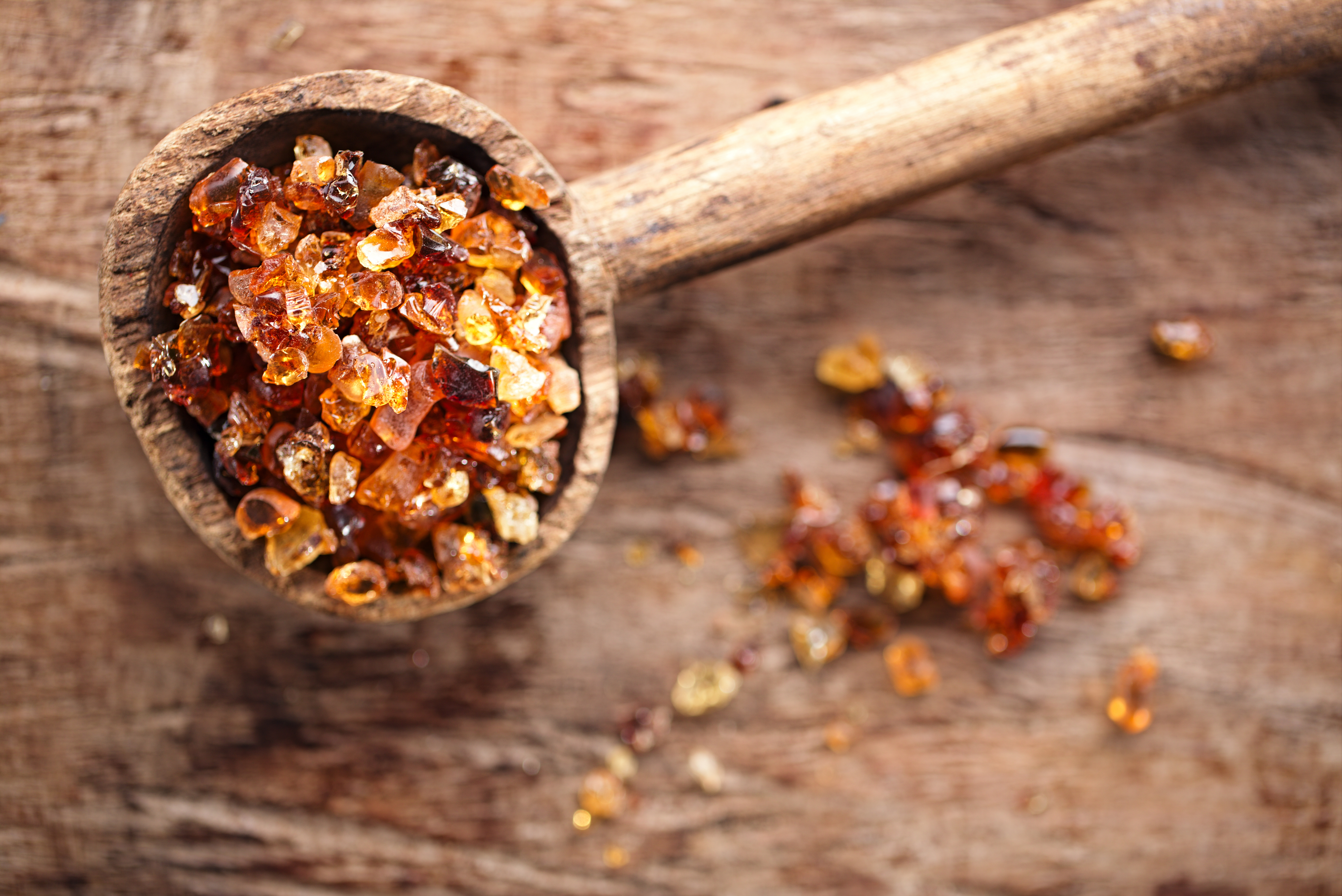Gum Arabic
Gum Arabic
Gum Arabic, also known as acacia gum, chaar gund or meska, is the most commercially popular of Food Gums, consisting of the hardened sap of wild Acacia trees and collected through drilling, hole incisions or natural exudation. Commercial grades of Gum Arabic are now predominately collected from the Acacia senegal and Acacia seyal species which are endemic to the Sahel region of Sub-Saharan Africa. Traditionally, the best quality gum has been associated with the Kordofan province of Sudan which produces close to 80% of the world’s supply. Other countries in which commercial production of Gum Arabic takes place include Nigeria, Mali, Senegal and, more recently, Chad.
The first known use of acacia gum can be traced back to the Ancient Egyptian civilisation where it was used as an adhesive and an ink. Over time, the product found its way to Europe and earned the name ‘Gum Arabic’ owing to the fact it was exported from Arabian ports. Today, Gum Arabic’s unique properties have led to its industrial application across a wide variety of sectors including food, textiles, ceramics, cosmetics and pharmaceuticals. As a food additive, it acts as a stabilizer, thickener or emulsifying agent, widely used, for instance, in soft drink concentrates to bind flavours with essential oils. As a physiologically harmless substance, Gum Arabic is also used by pharmaceuticals for drug encapsulation, in addition to the benefits recent studies have shown of its use in treatments for several degenerative conditions such as kidney failure and cardiovascular disease.
Category
Tree Saps & Plant Exudates
Scientific Name
Acacia senegal / Acacia seyal
Technical Specifications
Min. Order Quanitiy
None
Supply Lead Time
30 Days

